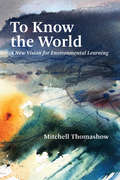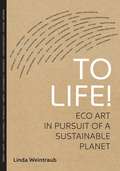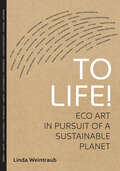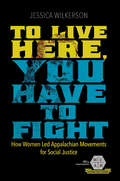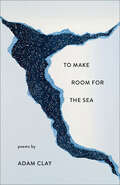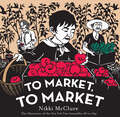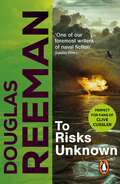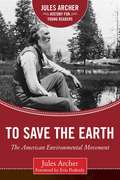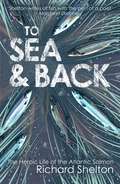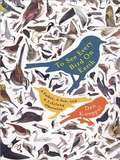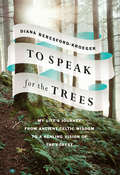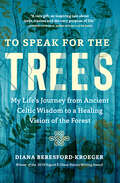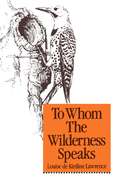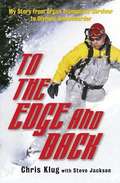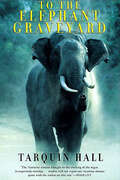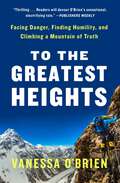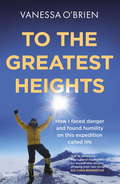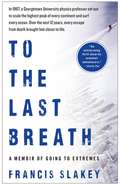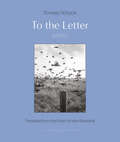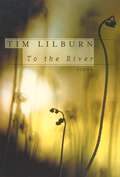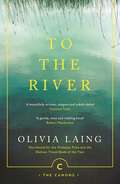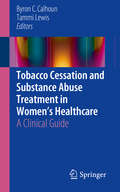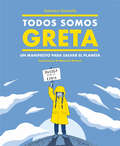- Table View
- List View
To Know the World: A New Vision for Environmental Learning
by Mitchell ThomashowWhy we must rethink our residency on the planet to understand the connected challenges of tribalism, inequity, climate justice, and democracy.How can we respond to the current planetary ecological emergency? In To Know the World, Mitchell Thomashow proposes that we revitalize, revisit, and reinvigorate how we think about our residency on Earth. First, we must understand that the major challenges of our time--migration, race, inequity, climate justice, and democracy--connect to the biosphere. Traditional environmental education has accomplished much, but it has not been able to stem the inexorable decline of global ecosystems. Thomashow, the former president of a college dedicated to sustainability, describes instead environmental learning, a term signifying that our relationship to the biosphere must be front and center in all aspects of our daily lives. In this illuminating book, he provides rationales, narratives, and approaches for doing just that.
To Life!: Eco Art in Pursuit of a Sustainable Planet
by Linda WeintraubTo Life! Eco Art in Pursuit of a Sustainable Planet documents the burgeoning eco art movement from A to Z, presenting a panorama of artistic responses to environmental concerns, from Ant Farm’s anti-consumer antics in the 1970s to Marina Zurkow’s 2007 animation that anticipates the havoc wreaked upon the planet by global warming. This text is the first international survey of twentieth and twenty-first-century artists who are transforming the global challenges facing humanity and the Earth’s diverse living systems. Their pioneering explorations are situated at today’s cultural, scientific, economic, spiritual, and ethical frontiers. The text guides students of art, design, environmental studies, and interdisciplinary studies to integrate environmental awareness, responsibility, and activism into their professional and personal lives.
To Life!: Eco Art in Pursuit of a Sustainable Planet
by Linda WeintraubTo Life! Eco Art in Pursuit of a Sustainable Planet documents the burgeoning eco art movement from A to Z, presenting a panorama of artistic responses to environmental concerns, from Ant Farm’s anti-consumer antics in the 1970s to Marina Zurkow’s 2007 animation that anticipates the havoc wreaked upon the planet by global warming. This text is the first international survey of twentieth and twenty-first-century artists who are transforming the global challenges facing humanity and the Earth’s diverse living systems. Their pioneering explorations are situated at today’s cultural, scientific, economic, spiritual, and ethical frontiers. The text guides students of art, design, environmental studies, and interdisciplinary studies to integrate environmental awareness, responsibility, and activism into their professional and personal lives.
To Live Here, You Have to Fight: How Women Led Appalachian Movements for Social Justice (Working Class in American History #295)
by Jessica WilkersonLaunched in 1964, the War on Poverty quickly took aim at the coalfields of southern Appalachia. There, the federal government found unexpected allies among working-class white women devoted to a local tradition of citizen caregiving and seasoned by decades of activism and community service. Jessica Wilkerson tells their stories within the larger drama of efforts to enact change in the 1960s and 1970s. She shows white Appalachian women acting as leaders and soldiers in a grassroots war on poverty--shaping and sustaining programs, engaging in ideological debates, offering fresh visions of democratic participation, and facing personal political struggles. Their insistence that caregiving was valuable labor clashed with entrenched attitudes and rising criticisms of welfare. Their persistence, meanwhile, brought them into unlikely coalitions with black women, disabled miners, and others to fight for causes that ranged from poor people's rights to community health to unionization. Inspiring yet sobering, To Live Here, You Have to Fight reveals Appalachian women as the indomitable caregivers of a region--and overlooked actors in the movements that defined their time.
To Make Room for the Sea: Poems
by Adam Clay&“The more I sit with these poems, the more they resonate with me and with universal patterns and themes—existential inquiries, loneliness, spiritual doubts.&” —Green Mountains ReviewTo Make Room for the Sea reckons with the notion that nothing in this world is permanent. Led by an introspective speaker, these poems examine a landscape that resists full focus, and conclude that &“it&’s easier to love what we don&’t know.&” &“I hold this leaf I think / you should see, but I can&’t quite / say why,&” Adam Clay writes, as he navigates a variety of both personal and ecological fixations: disembodied bullfrog croaks, the growth of his child, a computer&’s dreaded blue screen of death. The observations in To Make Room for the Sea convey both grief for the Anthropocene and hope for the future. The poems read like field notes from someone who knows the world and hopes to know it differently. On the precipice of great change and restructured perspective, Clay&’s poems linger in &“the second between taking in a vision and processing it,&” in the moment when the world is less a familiar system and more a palette of colors and potential.To Make Room for the Sea delights as much as it mourns. It looks forward as much as it reflects. Deft and hopeful, the poems in this collection gently encourage us to take another look at a world &“only some strange god might have thought up / in a drunken stumble.&” &“That&’s the magic of this book—the way Adam Clay, line after line, enacts the mind on the page.&” —Maggie Smith &“Draws from an impressive repertoire of forms to tease out complex questions regarding time, epistemology, and memory.&” —Publishers Weekly
To Market, to Market
by Nikki McClureFrom the New York Times-bestselling artist. “Exact, masterful cut-paper illustrations bring the market’s smells, produce, bustle and cheery people to life.” —Kirkus Reviews (starred review)WINNER: Washington State Book Award, Children’s Picture BooksKnown for art that celebrates the virtues of community, hard work, and living gently on the planet, Nikki McClure here explores a topic close to her heart: the farmers market. Alternating between story and fact, this lovingly crafted picture book follows a mother and son to the weekly market. As they check off items on their shopping list, the reader learns how each particular food was grown or produced, from its earliest stages to how it ended up at the market. To Market, to Market is a timely book that shines awareness on the skill that goes into making good food.“McClure’s papercuts of windblown hair, vegetable leaves, craftsmen at work, and beds of hay continue to delight. This is, in effect, two books in one: younger readers can stick to the gentle introductions to sections about kale, smoked salmon, honey, blueberry turnovers, cheese, and even napkins; older children will appreciate (and have the patience to sit through) each product’s path to market.” —Publishers Weekly“Astonishingly detailed.” —School Library Journal
To Risks Unknown: an all-action tale of naval warfare set at the height of WW2 from the master storyteller of the sea
by Douglas ReemanMulti-million copy bestselling author Douglas Reeman is the master of naval fiction and this action-packed, high-octane WW2 historical adventure is no exception. Jam-packed with tension, drama and all-guns-blazing warfare, it's perfect for fans of Clive Cussler, Bernard Cornwell and Wilbur Smith.'One of our foremost writers of naval fiction' - Sunday Times'Just superb!!!' -- ***** Reader review'Such a joy to read' -- ***** Reader review'Kept me gripped' -- ***** Reader review'Hard to put down while reading' -- ***** Reader review***********************************************************************************1943: Now there is to be no more retreat for Britain and her Allies.At last the war is to be carried into enemy territory. From captured bases and makeshift harbours in North Africa, The Royal Navy's Special Force is to be the probe and the spearhead of the advance.To this unorthodox war come H. M. S. Thistle and her commanding officer, John Crispin. Both veterans, she from the Atlantic, he from the trauma of seeing his last command and her company brutally destroyed. Soon they are fighting amongst remote Adriatic islands - helping the partisans and guerrillas with whom they have little in common, except an overwhelming common hatred of the enemy who has attacked and destroyed their countries.When it comes to the crunch, ship and crew have to be welded into a single fighting unit. And it has to be done, not in training, but on active duty.
To Save the Earth: The American Environmental Movement (Jules Archer History for Young Readers)
by Jules Archer Erin PeabodyWith today's climate change, our environmental problems aren’t going away any time soon.To Save the Earth looks at the lives of four extraordinary Americans who fought to save our earth. John Muir, a pioneer of conservationism, was the founder of our national park system. Rachel Carson, biologist and author, educated our country about the effects of pesticides and chemical waste. David McTaggart, the organizer of Greenpeace, introduced nonviolent protest into the struggle, while Dave Foreman, cofounder and former leader of the activist group Earth First!, shook up a movement that had grown complacent.The biographies of each of these figures, as well as personal interviews with David McTaggart and Dave Foreman, help us to understand the environmental movement specific to the United States. With current issues of excessive pollution and climate change, this is an excellent resource for introducing young readers to the cause. Upon first publication, To Save the Earth was chosen as a Junior Library Guild Selection, and now, this fascinating and important book is back in print to teach a whole new generation of readers the importance of environmental conservation and preservation.
To School Through The Fields
by Alice TaylorThrough the fields and in the cottages round about is where we view Alice Taylor's childhood in County Cork, Ireland. This gentle, witty memoir is told to the rhythms of nature and farm life as it cycles through the years. Reading it is like taking a vacation and better than any field trip you took to a farm. When the family slaughters a couple of hogs, all of the neighbours help and they all share in the meat. You'll see how it is processed from carcass to plate. You'll discover why Alice loves her quirky neighbours but isn't as fond of nuns. Sweating and happy, farmhands and children alike harvest the hay with the aid of a tumbling paddy, a huge comb like contraption made of wood. They wash off the sweat, hayseeds and insects in an icy refreshing stream. Then there's cold tea and apple cake to fortify them for another round of work. Alice's mother notices the best in everyone and oversees the daily recitation of the rosary. Her father is comforted more by the richness of life in his crops and farm animals. The children play freely outside not missing or needing toys. There are tragedies like the death of Alice's little brother, but most of Alice's memories of a time that is now lost to us, brim with joy humor and love.
To Sea & Back: The Heroic Life of the Atlantic Salmon
by Richard SheltonCombining exquisite natural history with beguiling autobiographical and historical narrative, a portrait of a fish whose story is closely intertwined with our own The Atlantic salmon is an extraordinary and mysterious fish. Here, Richard Shelton combines memoir and deep scientific knowledge to reveal, from the salmon's point of view, both the riverine and marine worlds in which it lives. He explores this iconic fish's journey to reach its feeding grounds in the northern oceans before making the return over thousands of miles to the brooks of its birth to reproduce. Along the way, Shelton describes the feats of exploration that gave us our first real understanding of the oceans, and shows how this iconic fish is a vital indicator of the health of our rivers and oceans. Above all, this is the story of Richard Shelton's lifelong passion for the sea and his attempt to solve the perennial enigmas of the salmon's secret life.
To See Every Bird on Earth
by Dan KoeppelWhat drives a man to travel to sixty countries and spend a fortune to count birds? And what if that man is your father? Richard Koeppel’s obsession began at age twelve, in Queens, New York, when he first spotted a Brown Thrasher, and jotted the sighting in a notebook. Several decades, one failed marriage, and two sons later, he set out to see every bird on earth, becoming a member of a subculture of competitive bird watchers worldwide all pursuing the same goal. Over twenty-five years, he collected over seven thousand species, becoming one of about ten people ever to do so. To See Every Bird on Earth explores the thrill of this chase, a crusade at the expense of all else-for the sake of making a check in a notebook. A riveting glimpse into a fascinating subculture, the book traces the love, loss, and reconnection between a father and son, and explains why birds are so critical to the human search for our place in the world. BACKCOVER: "Marvelous. I loved just about everything about this book. ” -Simon Winchester, author of The Professor and the Madman "A lovingly told story . . . helps you understand what moves humans to seek escape in seemingly strange other worlds. ” -Stefan Fatsis, author of Word Freak "Everyone has his or her addiction, and birdwatching is the drug of choice for the father of author Dan Koeppel, who writes affectionately but honestly about his father’s obsession. ” -Audubon Magazine (editor’s choice) "As a glimpse into human behavior and family relationships, To See Every Bird on Earth is a rarity: a book about birding that nonbirders will find just as rewarding. ” -Chicago Tribune .
To Speak for the Trees: My Life's Journey from Ancient Celtic Wisdom to a Healing Vision of the Forest
by Diana Beresford-KroegerCanadian botanist, biochemist and visionary Diana Beresford-Kroeger's startling insights into the hidden life of trees have already sparked a quiet revolution in how we understand our relationship to forests. Now, in a captivating account of how her life led her to these illuminating and crucial ideas, she shows us how forests can not only heal us but save the planet.When Diana Beresford-Kroeger--whose father was a member of the Anglo-Irish aristocracy and whose mother was an O'Donoghue, one of the stronghold families who carried on the ancient Celtic traditions--was orphaned as a child, she could have been sent to the Magdalene Laundries. Instead, the O'Donoghue elders, most of them scholars and freehold farmers in the Lisheens valley in County Cork, took her under their wing. Diana became the last ward under the Brehon Law. Over the course of three summers, she was taught the ways of the Celtic triad of mind, body and soul. This included the philosophy of healing, the laws of the trees, Brehon wisdom and the Ogham alphabet, all of it rooted in a vision of nature that saw trees and forests as fundamental to human survival and spirituality. Already a precociously gifted scholar, Diana found that her grounding in the ancient ways led her to fresh scientific concepts. Out of that huge and holistic vision have come the observations that put her at the forefront of her field: the discovery of mother trees at the heart of a forest; the fact that trees are a living library, have a chemical language and communicate in a quantum world; the major idea that trees heal living creatures through the aerosols they release and that they carry a great wealth of natural antibiotics and other healing substances; and, perhaps most significantly, that planting trees can actively regulate the atmosphere and the oceans, and even stabilize our climate. This book is not only the story of a remarkable scientist and her ideas, it harvests all of her powerful knowledge about why trees matter, and why trees are a viable, achievable solution to climate change. Diana eloquently shows us that if we can understand the intricate ways in which the health and welfare of every living creature is connected to the global forest, and strengthen those connections, we will still have time to mend the self-destructive ways that are leading to drastic fires, droughts and floods.
To Speak for the Trees: My Life's Journey from Ancient Celtic Wisdom to a Healing Vision of the Forest
by Diana Beresford-Kroeger&“A rare gift: an inspiring tale about trees, trauma and the very purpose of life.&” —Andrew Nikiforuk, author of Empire of the Beetle Diana Beresford-Kroeger—a world-recognized botanist and medical biochemist—has revolutionized our understanding of the natural world with her startling insights into the hidden life of trees. In this riveting memoir, she uncovers the roots of her discoveries in her extraordinary childhood in Ireland. Soon after, her brilliant mind bloomed into an illustrious scientific career that melds the intricacies of the natural world with the truths of traditional Celtic wisdom. To Speak for the Trees uniquely blends the story of Beresford-Kroeger&’s incredible life and her outstanding achievement as a scientist. It elegantly shows us how forests can not only heal us as people but can also help save the planet.
To Whom the Wilderness Speaks
by Louise De Lawrence Aleta Karstad"Lawrence was quite possibly the most remarkable woman in Canada. Certainly she was a remarkable nature writer."- Pat Barclay, Books in Canada"She was a premier speciman of a vital breed: the amateur naturalist. Her 7 books, 17 scientific papers, scores of magazine articles and over 500 reviews have all been based on her close and tireless observation of bird and animal behaviour."- Merilyn Mohr, Harrowsmith
To the Edge and Back: My Story from Organ Transplant Survivor to Olympic Snowboarder
by Steve Jackson Chris KlugStory of Chris Klug, Olympic snowboarder. His life, dreams, and organ transplant survival.
To the Elephant Graveyard
by Tarquin Hall“Introduces us to the darker side of the Asian elephant. It is more of a thriller than a straightforward travel book . . . insightful and sensitive.” —Literary ReviewOn India’s northeast frontier, a killer elephant is on the rampage, stalking Assam’s paddy fields and murdering dozens of farmers. Local forestry officials, powerless to stop the elephant, call in one of India’s last licensed elephant hunters and issue a warrant for the rogue’s destruction. Reading about the ensuing hunt in a Delhi newspaper, journalist Tarquin Hall flies to Assam to investigate. To the Elephant Graveyard is the compelling account of the search for a killer elephant in the northeast corner of India, and a vivid portrait of the Khasi tribe, who live intimately with the elephants. Though it seems a world of peaceful coexistence between man and beast, Hall begins to see that the elephants are suffering, having lost their natural habitat to the destruction of the forests and modernization. Hungry, confused, and with little forest left to hide in, herds of elephants are slowly adapting to domestication, but many are resolute and furious. Often spellbinding with excitement, like “a page-turning detective tale” (Publishers Weekly), To the Elephant Graveyard is also intimate and moving, as Hall magnificently takes us on a journey to a place whose ancient ways are fast disappearing with the ever-shrinking forest.“Hall is to be congratulated on writing a book that promises humor and adventure, and delivers both.” —The Spectator“Travel writing that wonderfully hits on all cylinders.” —Booklist“A wonderful book that should become a classic.” —Daily Mail
To the Greatest Heights: Facing Danger, Finding Humility, and Climbing a Mountain of Truth
by Vanessa O'BrienTravel to the top of the world&’s highest mountains with this this riveting and uplifting memoir that &“is a rare mix of heart-stopping adventure and powerful self-reflection&” (Johanna Garton, author of Edge of the Map) by Vanessa O&’Brien, record-breaking American British explorer.Long before she became the first American woman to summit K2 and the first British woman to return from its summit alive, Vanessa O&’Brien was a feisty suburban Detroit teenager forced to reinvent her world in the wake of a devastating loss that destroyed her family. Making her own way in the world, Vanessa strove to reach her lofty ambitions. Soon, armed with an MBA and a wry sense of humor, she climbed the corporate ladder to great success, but after the 2009 economic meltdown, her career went into a tailspin. She searched for a new purpose and settled on an unlikely goal: climbing Mount Everest. When her first attempt ended in disaster, she trudged home, humbled but wiser. Two years later, she made it to the top of the world. And then she kept going. Grounded by a cadre of wise-cracking friends and an inimitable British spouse, Vanessa held her own in the intensely competitive world of mountaineering, summiting the highest peak on every continent, and skiing the last degree to the North and South Poles. She set new speed records for the Seven Summits, receiving a Guinness World Record and the Explorers Grand Slam, and finally made peace with her traumatic past. During her attempt on K2, she very nearly gave up. But on the &“savage mountain,&” which kills one out of every four climbers who summit, Vanessa evolved from an adventurer out to challenge herself to an explorer with a high-altitude perspective on a changing world—and a new call to share her knowledge and passion across the globe. Told with heart and humor, To the Greatest Heights is a &“vicariously engaging addition to the literature on mountaineering as well as a beacon of inspiration&” (Kirkus Reviews, starred review).
To the Greatest Heights: One woman's inspiring journey to the top of Everest and beyond
by Vanessa O'Brien'What a wonderful, honest, refreshing book, full of free-spirited adventure, humour and profound thoughts to provide inspiration to anyone who simply dreams of getting out and doing their own thing' SIR CHRIS BONINGTON'Ernest Shackleton listed those qualities an explorer should possess over a century ago: optimism, patience, idealism with imagination, and courage. Vanessa's qualities are truly akin to these' ALEXANDRA SHACKLETONWhen Vanessa O'Brien was made redundant in 2008 as part of the recession, she moved to Hong Kong with her husband for his career and resigned herself to being 'just the wife'. There she was, aged 46, bored, uninspired, unemployed. Was this going to be how she was going to live the rest of her life?One night in the infamous Kee Club, over shots of tequila, a friend suggested O'Brien climb Everest, and that was the start of an epic journey she never looked back from as she climbed Everest, K2 and many other mountains. This is her inspirational story. As O'Brien says, she couldn't explain to her readers how she got to the top of K2 at the age of 52 without being honest about what came before. In To the Greatest Heights, she reveals the trials and tribulations of her difficult childhood, and the result is a life-affirming book that shows how she achieved these climbs in spite of and because of her past. To read To the Greatest Heights is to know that there is a path to overcoming the worst of what happens to us, a path that helps us reach the summit of our lives too, whatever our age.
To the Last Breath
by Francis SlakeyA journey to the most extreme points on Earth and deep inside the human spirit Before Georgetown physics professor Francis Slakey decided to climb the highest mountain on every continent and surf every ocean, he had shut himself off from other people. His lectures were mechanical; his relationships were little more than ways to fill the evenings. But as his journey veered dangerously off course, everything about him began to change. A gripping adventure of the body and mind, To the Last Breath depicts the quest that leads Slakey around the globe, almost takes his life, challenges his fiercely held beliefs, and opens his heart. The scientist in Slakey explores the history of Robert Falcon Scott's doomed Antarctica expedition, the technology of climbing, and the geophysics of waves. But it is the challenges he endures and the people he encounters--a Lama who gives him a mysterious amulet, a life-or-death choice atop Everest, an ambush at gunpoint in Indonesia, a head-on collision in the high desert--that culminate in a moving lesson about what it means to be human.
To the Letter: Poems
by Tomasz RozyckiFrank, acute, and intimate poems of human loss, resilience, and love – detective poem, historical hopscotch, love story &“A truly lyrical longing for the world to be transformed.&”—Polish Book InstituteRóżycki collects moments of illumination – a cat dashing out of a window and "feral sun" streaking in, a body planting itself in the ground like rhubarb and flowering. He collects and collects, opens a crack, and clutches a shrapnel of epiphany.Tomasz Różycki's To the Letter follows Lieutenant Anielewicz on the hunt for any clues that might lead 21st century human beings out of a sense of despair. With authoritarianism rising across Eastern Europe, the Lieutenant longs for a secret hero. At first, he suspects some hidden mechanism afoot: fruit tutors him in the ways of color, he drifts out to sea to study the grammar of tides, or he gazes at the sun as it thrums away like a timepiece. In one poem, he admits "this is the story of my confusion," and in the next the Lieutenant is back on the trail. "This lunacy needs a full investigation," he jibes.He wants to get to the bottom of it all, but he's often bewitched by letters and the trickery of language. Diacritics on Polish words form a "flock of sooty flecks, clinging to letters" and Lieutenant Anielewicz studies the tails, accents, and strokes that twist this script.While the Lieutenant can't write a coherent code to solve life's mysteries or to fill the absence of a country rent by war, his search for patterns throughout art, philosophy, and literature lead not to despair but to an affirmation of the importance of human love
To the River
by Tim LilburnTo the River is a beautifully crafted gathering of poems. Turning and returning to the banks of the South Saskatchewan River, it is a compelling meditation conducted in the presence of a particular landscape. With great metaphorical muscle, the poems move towards the inhabitants of that riverscape, which remains rich with a sense of the strangeness inside the familiarity of willow, geese, river ice, coyote, snowberry. It is not just the satisfaction of aesthetic accomplishment which gives the book its compulsive energy, but the persistence of the seeker’s desire for what eludes even our strongest acts of language. Contemplative and spare, spiritual and sensual, To the River is a poetry of praise, a love poem to the earth, a prayer, and a journal of interior practice. It is a collection written by a poet moving into the full stretch of his power.
To the River: A Journey Beneath the Surface (Canons #71)
by Olivia LaingAn author&’s walk &“from source to sea along the Ouse in Sussex is a meandering, meditative delight&” drawing on history, literature, and the river itself (The Guardian, UK). In To The River, author Olivia Laing embarks on a weeklong, midsummer odyssey along the banks of the River Ouse in Sussex, England, from its source near Haywards Heath to the sea, where it empties into the Channel at Newhaven. More than sixty years after Virginia Woolf drowned herself in the River Ouse, Laing still finds inspiration and guidance in the author&’s abiding presence. Through cow pastures, woods, and neighborhood streets, Laing&’s meandering walk occasions a profound and haunting reflection on histories both personal and cultural, and on landscapes both physical and emotional. Along the way, she explores the roles that rivers play in human lives, tracing their intricate flow through literature, mythology and folklore. Lyrical and stirring, To the River is a passionate investigation into how history resides in a landscape - and how ghosts never quite leave the places they love.&“Magical…By turns lyrical, melancholic and exultant, To the River just makes you want to follow Olivia Laing all the way to the sea.&”—Daily Telegraph, UK
Toad Weather
by Sandra MarkleA young girl, her mother, and her grandmother embark on a rainy day adventure in this engrossing story of discovery and wonder, inspired by a true story.There's nothing to do on a rainy day—or so Ally thinks. But Mama says she's seen something amazing, so despite Ally's misgivings, she sets out on an adventure with her mother and grandmother. On their journey, she sees all sorts of things: dripping awnings, wet cardboard, splashing cars...but also earthworms, storm drain geysers, and oil slick patterns. And then they turn the corner, just in time to see a big crowd. What's happening?Lyrical text from Sandra Markle and stunning paintings from New York Times best-selling illustrator Thomas Gonzalez tell a captivating, multigenerational story of a toad migration, inspired by the real-life Toad Detour in Roxborough, Pennsylvania.
Tobacco Cessation and Substance Abuse Treatment in Women's Healthcare
by Byron C. Calhoun Tammi LewisThis book is a comprehensive guide to the screening, management, and treatment of female patients with addictions. There are a range of clinical issues specific to women with substance use disorders and substance abuse during pregnancy is known to have deleterious effects on neonates. This book focuses on the effective care of the addicted patient and discusses novel outpatient therapy, therapeutic substitution, abstinence therapy, and the importance of counseling in the delivery of care. Topics include the physiology of nicotine, opiates, EtOH, and other substances of abuse; the role of receptors and neurotransmitters in addiction; the effects of tobacco and substance abuse on women' s health; and tobacco cessation methods. Featuring practical approaches to gender-responsive treatment, Tobacco Cessation and Substance Abuse in Women's Healthcare is a valuable resource for obstetricians, gynecologists, family medicine practitioners, and residents hoping to expand their knowledge of tobacco cessation and substance abuse in women's health.
Todos somos Greta: Un manifiesto para salvar el planeta
by Valentina GianellaTodos somos Greta, y solo nosotros podemos salvar el planeta ¿Qué es el cambio climático?¿Lo hemos causado nosotros?¿Cuáles son sus consecuencias?¿Estamos a tiempo de solucionarlo? Con solo 16 años, Greta no solo se ha hecho estas preguntas, sino que ha conseguido movilizar a millones de jóvenes de todo el mundo. Sus ideas y respuestas son toda una inspiración para proteger nuestro planeta y hacer posible un futuro lleno de esperanza. Seguro que tú también te has hecho esas preguntas, es el momento de unirse a la misión más importante de nuestra historia: salvar el planeta del cambio climático.
